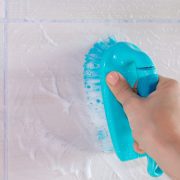
Backwashing a Pool Filter: A Comprehensive Guide
Understanding the Importance, Process, and Timing of Backwashing Your Pool Filter
A clean and efficient pool filter is essential for maintaining crystal-clear water and ensuring your pool stays healthy and safe. One of the most effective ways to maintain the performance of your pool filter is through backwashing. In this article, we’ll discuss the importance of backwashing, the step-by-step process, and the appropriate frequency for this essential maintenance task.
What is Backwashing?
Backwashing is a process that cleans the filter media, whether it be sand, diatomaceous earth (DE), or a cartridge filter, by reversing the water flow through the filter. This flushes out the accumulated dirt and debris, enabling the filter to operate at peak efficiency.
Why is Backwashing Important?
Over time, the filter media in your pool filter collects dirt, debris, and other contaminants. As these accumulate, they can reduce the filter’s effectiveness, leading to cloudy water and a higher risk of algae growth. Backwashing helps maintain the filter’s efficiency by removing these contaminants, ensuring optimal water circulation and filtration.
How to Backwash a Pool Filter: Step-by-Step Process
Note: The backwashing process varies slightly depending on the type of pool filter you have. The following steps are for a sand filter, but the process is similar for other filter types.
- Turn off the pool pump: Before starting the backwashing process, ensure that the pool pump is turned off to avoid any damage to the system.
- Attach the backwash hose: If your filter system requires a backwash hose, attach it to the filter’s backwash port and secure it with a hose clamp.
- Set the multiport valve to “Backwash”: Turn the multiport valve handle on your filter to the “Backwash” setting. Ensure that the handle clicks into place.
- Turn on the pool pump: With the valve set to “Backwash,” turn on the pool pump. The water will flow in reverse through the filter, flushing out the dirt and debris.
- Monitor the backwash process: Keep an eye on the sight glass or the water exiting the backwash hose. The water will initially appear dirty but should become clear after a few minutes.
- Turn off the pool pump: Once the water runs clear, turn off the pool pump.
- Set the valve to “Rinse”: Turn the multiport valve handle to the “Rinse” setting and turn on the pool pump for about 20-30 seconds. This helps to resettle the filter media and flush out any remaining debris.
- Turn off the pump and reset the valve: Turn off the pool pump and set the multiport valve back to the “Filter” setting.
- Restart the pool pump: Turn on the pool pump to resume normal filtration.
How Often Should You Backwash Your Pool Filter?
The frequency of backwashing depends on your pool’s usage, filter type, and size. A general guideline is to backwash when the filter pressure gauge reads 7-10 psi above the normal operating pressure. This indicates that the filter is becoming clogged and requires cleaning. For most pools, this translates to backwashing approximately every 4-6 weeks.
Conclusion
Backwashing is a crucial maintenance task that ensures your pool filter operates at peak efficiency. By understanding the importance, process, and timing of backwashing, you can maintain crystal-clear water and extend the lifespan of your pool filter. Remember to monitor your filter pressure gauge and follow the manufacturer’s recommendations for your specific pool filter to keep your pool in top shape.




